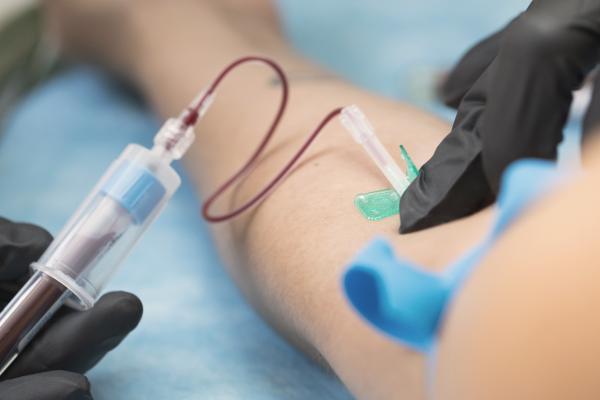News Release from The Lancet
Two phase 3 trials including more than 2500 people suggest that benralizumab as an add-on therapy reduces exacerbations in severely asthmatic patients when few treatment options remain.
A year’s course of benralizumab injections has led to a significant decrease in the frequency of asthma exacerbations – cutting the rate of exacerbations by a third to a half compared with placebo among people with the most severe form of asthma, according to two phase 3, double-blind, randomised controlled trials including more than 2500 patients in total.
The two trials, published in The Lancet and presented at the European Respiratory Society meeting in London (on 5th September), looked at the safety and efficacy of benralizumab as an add-on therapy for patients with severe, uncontrolled asthma – a group of patients who have few treatment options available and high rates of hospitalisation.
Asthma affects an estimated 315 million people worldwide, approximately 10% of whom have severe or uncontrolled asthma. Patients with severe asthma require treatment with high-dose inhaled corticosteroids (ISC) and long-acting beta agonists (LABA) to control the illness – both are delivered in the form of inhalers. However, for some patients, current treatments fail to control their asthma and they remain at high risk of exacerbations and hospitalisation.
Eosinophils are a type of white blood cell and part of the immune system controlling the mechanism associated with allergy and asthma. Many patients with severe, uncontrolled asthma have high levels of eosinophils in the blood and airways (known as eosinophilia) which is associated with frequent asthma exacerbations, high symptom burden and impaired lung function.
Cytokine interleukin-5 (IL-5) is the main driver of eosinophil proliferation, maturation, activation and survival. Two currently available drugs, mepolizumab and reslizumab, target the IL-5 molecule itself to stop the process of eosinophil maturation. Benralizumab, on the other hand, uses a different pathway by targeting the IL-5 receptor, causing eosinophil apoptosis (cell death).
In the CALIMA trial, 1306 patients aged 12-75 with severe asthma were randomly allocated into three groups: benralizumab 30mg every 4 weeks; benralizumab 30mg every 8 weeks (first 3 doses at 4 weeks apart); or placebo. Treatment continued for 56 weeks. All patients were already being treated with ISC and LABA and had experienced at least two exacerbations in the previous year.
The aim of the trial was to measure the effect of the drug on the annual rate of exacerbations in a sub-group of 728 patients with high eosinophils counts (over 300 cells/microL) – the most severe form of asthma. Benralizumab resulted in a 28-36% reduction in exacerbation rates compared to placebo (reduction from 2.8 to 0.60 exacerbations per year for treatment every 4 weeks; 2.7 to 0.66 for treatment every 8 weeks; 2.8 to 0.93 for placebo) (table 1 & 2). Benralizumab also resulted in improved lung function (as measured via spirometry) and total asthma score (treatment every 8 weeks only).
The most common adverse events were nasopharyngitis (169 [20%] of 866 benralizumab-treated patients vs 90 [21%] of 440 placebo-treated patients) and worsening asthma (108 [12%] vs 68 [15%]) (table 4). Four patients experienced serious adverse events which were considered related to treatment: one case of uricaria (hives) and two cases of asthma and herpes zoster in the benralizumab-treated group, and one case of non-cardiac chest pain the placebo-treated group. Seven (<1%) patients receiving benralizumab and three (<1%) receiving placebo discontinued treatment because of adverse events.
In the SIROCCO trial, 1209 patients were similarly randomised into three groups, and underwent 48 weeks of treatment. The analysis was performed in the 809 patients with high eosinophil counts. Benralizumab resulted in a 45-51% reduction in exacerbation rates compared to placebo (reduction from 3.0 to 0.73 per year for treatment every 4 weeks; 2.8 to 0.65 for treatment every 8 weeks; 3.1 to 1.33 for placebo) (table 1 & 2). Patients treated every 8 weeks also saw improvements in lung function and total asthma score.
The most common adverse events were worsening asthma (105 [13%] of 797 benralizumab-treated patients vs 78 [19%] of 407 placebo-treated patients) and nasopharyngitis (93 [12%] vs 47 [12%]) (table 4). Four patients experienced serious adverse events which were considered related to treatment: one case of allergic granulomatous (an autoimmune disorder causing inflammation of blood vessels), one panic attack and one paraethisia (pins and needles) in the benralizumab-treated group, and one injection-site erythema (skin reaction) in the placebo-treated group. 18 patients (2%) receiving benralizumab and three (1%) receiving placebo discontinued treatment because of adverse events.
Four benralizumab-treated patients died during the treatment period in the CALIMA trial, and five patients in the SIROCCO trial (three benralizumab-treated patients and two in the placebo group). None of these deaths were considered to be related to the treatments.
“Patients with severe, uncontrolled asthma have very few treatment options once they are already taking high-dose inhaled corticosteroids and long-acting beta agonists,” says Professor Eugene Bleecker, Centre for Genomics and Personalised Medicine, Wake Forest School of Medicine, Winston-Salem, NC, USA lead author of the SIROCCO trial. “Two drugs are currently approved for the treatment of severe, uncontrolled asthma (mepolizumab and reslizumab) but both target the IL-5 molecule directly, rather than the receptor. By targeting the IL-5 receptor, benralizumab depletes eosinophils directly, and our studies show that eosinophil counts were nearly completely depleted by week 4 of treatment.”
“The results from both trials indicate that benralizumab treatment once every 4 or 8 weeks decreased eosinophil counts, reduced asthma exacerbations, and improved lung function for patients with severe, uncontrolled asthma with eosinophilia” adds Professor J. Mark FitzGerald, The Lung Centre, Vancouver Coastal Health, University of British Columbia, Vancouver, BC, Canada, lead author of the CALIMA trial. “Additional therapeutic options to control severe asthma are urgently needed and our findings support the use of benralizumab as an add-on therapy for the treatment of severe asthma with persistent eosinophilia.” [2]
The authors note that both trials show a strong placebo effect as rates of exacerbations decreased significantly in the placebo group who had an injection, but did not receive the drug. Patients in both trials were invited to join a two-year BORA safety extension study to provide data on longer-term use of benralizumab.
Writing in a linked Comment, Dr Mario Castro, Washington University School of Medicine, USA, compares benralizumab to mepolizumab and reslizumab and discusses the differences in the magnitude of effect in the two trials. He adds: “The CALIMA and SIROCCO studies also suggest that more frequent dosing initially followed by longer duration between treatments with an anti-interkeukin-5 monoclonal antibody should be investigated further. In these studies, in the Q8W dosing regimen, benralizumab was first given Q4W for 3 months probably to deplete eosinophils more rapidly in patients with high eosinophil tissue burden. Given the efficacy of Q8W dosing on exacerbations, symptom scores, asthma control, and quality of life, and the economical savings of using half the amount of drug suggests a potential advantage to this dosing regimen over Q4W dosing. Additionally, the less frequent dosing of anti-interleukin-5 might allow one to consider using these biologics earlier in the course of the disease, and in children.”


